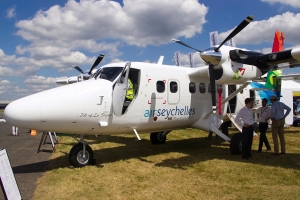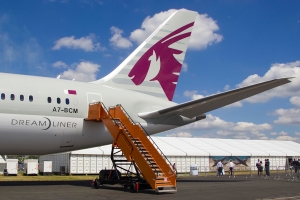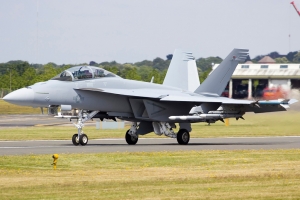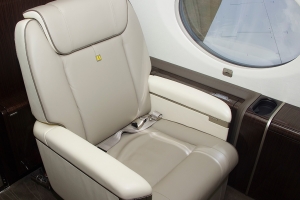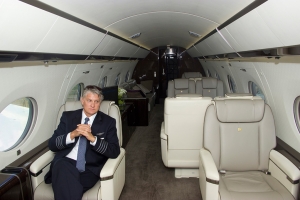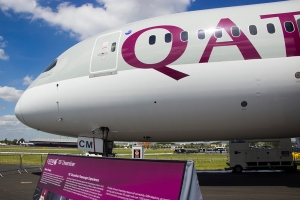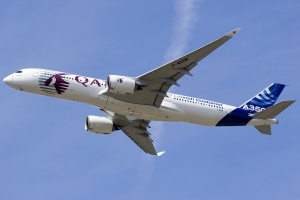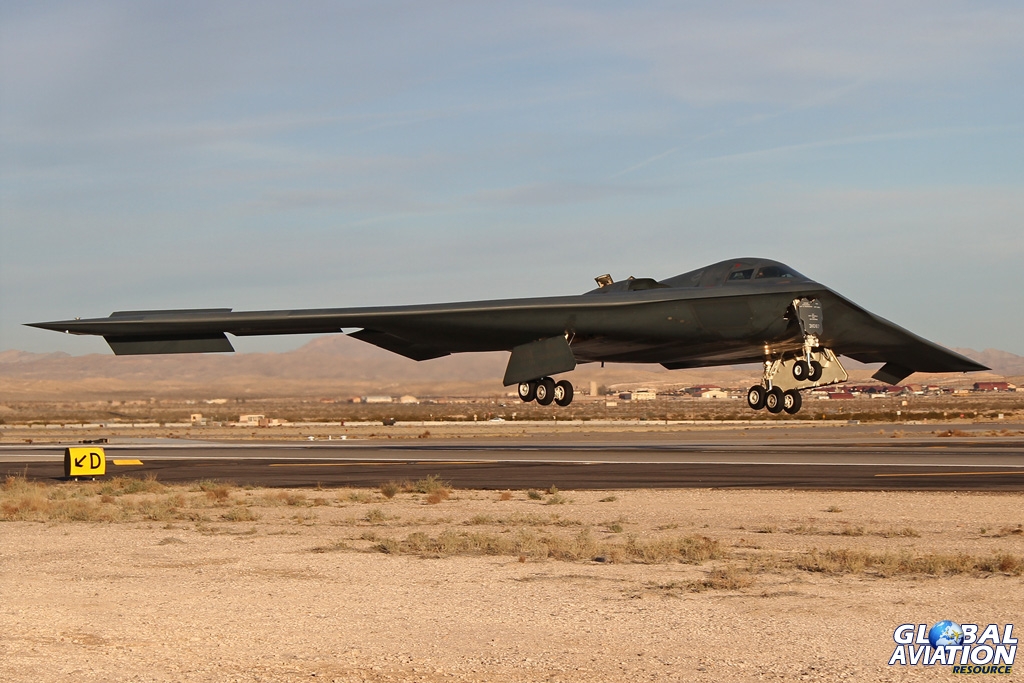Last week’s Farnborough International Airshow closed with with more than $200 billion of orders and 100,000 visitors. Glenn Beasley reports for GAR.
As the Royal International Air Tattoo drew to a close, the 2014 Farnborough International Airshow (FIA) opened its doors with hopes still burning that the F-35 would finally make the transatlantic crossing to make its international airshow début.
Early press releases during the show from the FIA press office were still hopeful of an appearance of the F-35 later in the week of the trade days and by Tuesday afternoon the grounding order on the jet had been lifted, albeit with a limited flight envelope and a revised engine inspection interval timetable.

The A350 is an impressive performer © Glenn Beasley – www.globalaviationresource.com
Alas, despite the lifting of the grounding order three weeks after the engine fire at Eglin AFB, the limitations on the F-35’s flight envelope proved to be the final straw of the protracted saga and the F-35s remained where they had been for the past three weeks, on the ramp at NAS Paxtuent River, Maryland. Certainly a big disappointment to the organisers of Farnborough and a public relations disaster for Lockheed Martin.
The loss of the F-35 to the show meant that it became an event typical of recent Farnborough shows, with Airbus and Boeing battling things out for orders in the civilian aircraft market. Business boomed at this year’s show, with improving economic fortunes seemingly driving orders which were announced at the show. At the close of play on day one, $42 billion of orders had been made which were three times the total of the opening day in 2012. Fast forward to day two and the figure had risen to $100 billion. By the end of the trade week, orders had risen to $201 billion; a record breaking year for the show.
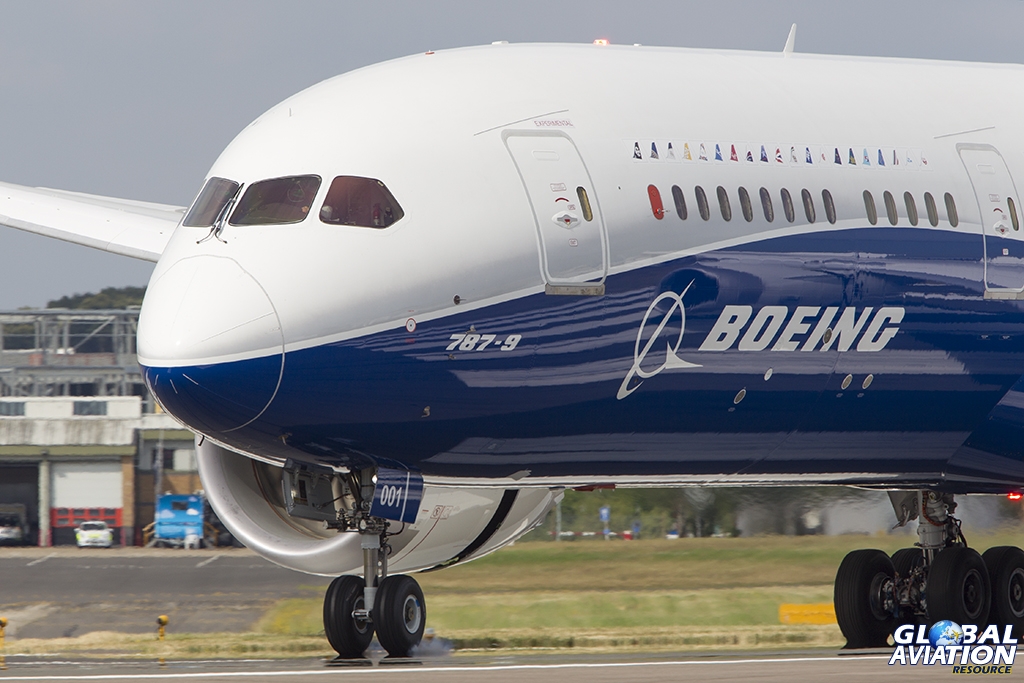
Boeing announced deals for 201 aircraft valued at $40.2 billion © Tom Gibbons – Global Aviation Resource
Breaking down the record breaking figures saw orders for civil jet engines reaching 1,600 units worth $34.5 billion, over 1,100 aircraft units worth $152 billion and $14.5 billion worth of service contracts respectively. In hot and humid conditions over the five trade days, visitor numbers topped 100,000. In the battle for supremacy between Airbus and Boeing, it was the European manufacturer that had the edge, with orders for 496 aircraft which was valued at $75.3 billion, whilst Boeing announced deals for 201 aircraft valued at $40.2 billion.
Opening the show on the Monday, British Prime Minister David Cameron used the opportunity to announce £1.1bn worth of commitments to UK defence expenditure to combat ‘modern threats’. According to the Prime Minister, this cash injection was a result of tough decisions previously taken over the defence budget and the closure of the ‘black hole’ Mr Cameron claimed his government had inherited on taking up office. Much of this expenditure relates to areas such as intelligence, surveillance, target acquisition and reconnaissance, with the RAF’s fleet of Sentinels expected to continue to 2018 and a £300 million investment in the active electronically scanned array (AESA) radar for the Typhoon fighter fleet.

Captor-E (AESA) radar for RAF Typhoons © Tom Gibbons – Global Aviation Resource
Airbus used the show to launch the A330-900neo airliner, and by the close of the show had orders for 121 units. Customers who signed up during the show included Air Lease Corporation and Air Asia X. The A330neo is of course an update to the well established A330 and features the Rolls Royce Trent 7000 engine and modified wings, and is said to exploit a market for customers who may not wish to operate an aircraft such as the bigger A350XWB, which was also making it’s Farnborough début.
Products adorned with the Qatar Airways livery were much in evidence, with the 787-8, A320 and the A350 all carrying Qatar Airways titles. Boeing also brought its newest Dreamliner in its own house colours in the shape of the 787-9 version. Qatar Airways also announced a new Boeing order during the course of the show, with an order for 50 777-9X aircraft. Other Boeing orders included that of Monarch Airlines with a commitment for 30 Boeing Max 8s and British Airways parent group IAG were another UK airline making an order for 20 Airbus A320neo aircraft.

Boeing F/A-18F Super Hornet © Tom Gibbons – Global Aviation Resource
It has often been the case that the flying displays held during the trade days at Farnborough contain a number of aircraft that don’t usually hang around for the weekend public days. That may have been the case again with some of the participants this year, but equally there were gems in the weekend public days that would have been nice to see earlier in the week! Most notable of these was the return to UK skies of a Harrier display, this time from the Spanish Navy, surely one of the airshow highlights of the season.
For the trade days of the show, the Airbus family of aircraft dominated the first part of the afternoon flying display. It’s always impressive to see such beasts as the A380, A350 and A400M towed out of the static display and then quickly brought to life at the end of the runway at Farnborough. Even more impressive during the flying display was the sight of the Airbus company A380 on finals to Farnborough’s Runway 26 and the A350XWB commencing its take-off run. It’s fair to say that all the ‘big’ airliners on the flying programme, including the 787-9, made superb steep climb outs on take-off and similarly impressive tight turns over the Farnborough show ground.

M345 will be utilised by the Frecce Tricolori © Glenn Beasley – www.globalaviationresource.com
On the military side of the flying display, the two genuine fast jets were the Boeing F/A-18F Super Hornet, using an unmarked example from US Navy squadron VFA-106 ‘Gladiators’, and Flt Lt Noel Rees from 29(R) Squadron, RAF Coningsby with the Eurofighter Typhoon FGR4. The Typhoon had also flown in formation with the Red Arrows to open the show on the Monday. An aggressive looking participant was that from the Turkish Army in the shape of the T-129A ATAK helicopter, which has been developed by the Turkish Aerospace Industries, partnered by Agusta Westland. The Turkish Army already has 51 of the type on order with options for a further 41 examples in the future. Certainly another interesting option in the attack helicopter market place.
One of the most impressive demonstrations of the flying display on the military side of things was that of the Alenia Aermacchi M-346 Master jet trainer. With the addition of an excellent smoke system from wing mounted ‘smoke winders’, the aircraft flew a powerful, polished and punchy routine which demonstrated the aircraft as an excellent fast jet trainer platform. Depending on the trade day, Alenia also displayed the M-345 adorned in Italian Aerobatic Team markings of the Frecce Tricolori, and both the M-345 and M346 also flew with the Phoenix Blackshape Prime light prop aircraft which was demonstrated as a complete training package for a potential air force customer.
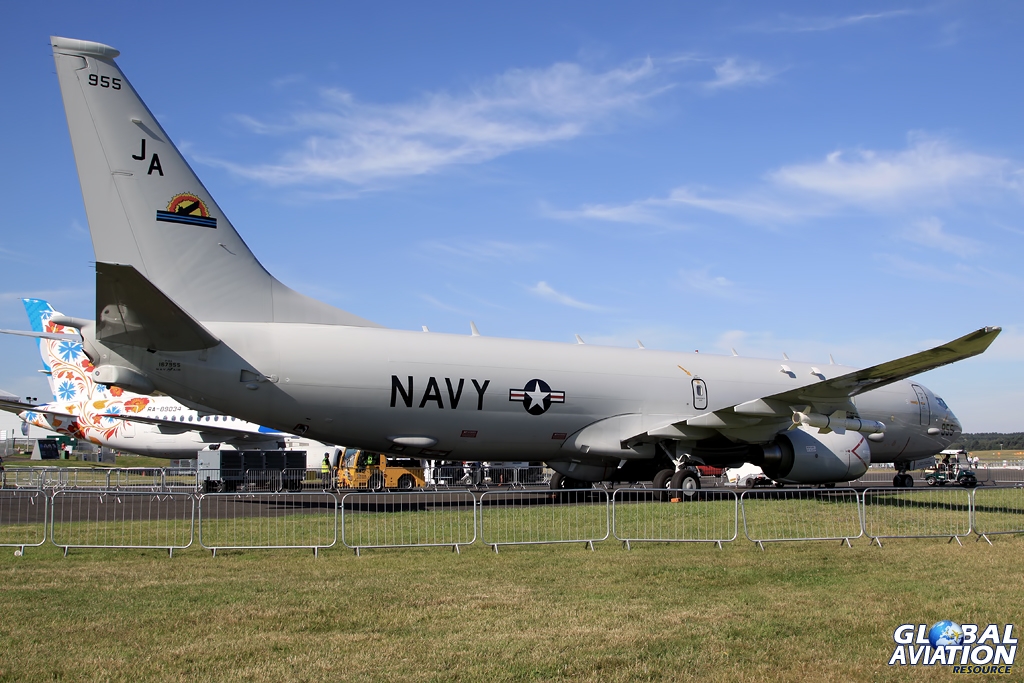
P-8A Poseidon © John Higgins – www.globalaviationresource.com
The Boeing P-8A Poseidon has been in the UK for several weeks now and made static appearances at both the RAF Waddington International Airshow and Royal International Air Tattoo at RAF Fairford. At Farnborough it went one better and flew as part of the display. It would seem further orders for the type will soon be coming, with rumours rife that the Royal Air Force may soon place an order. As of course the type is based on the 737 airliner, its take-off was akin to the other airliners on show, very steep indeed. There were also numerous passes in which the underside ‘bomb bay’ doors could be clearly seen.
As mentioned earlier, the public days were bolstered by some very welcome participants, which also included the Breitling Super Constellation fresh from her appearance at the Flying Legends airshow the previous week and those classic bombers, the Vulcan and Canberra. Perhaps the one big disappointment was the cancellation of the EADS Messerschmitt Me-262 replica, which was scheduled to make its UK début at Farnborough. Still, serviceability issues and the like cannot be helped and it’s fair to say that whether you attended on a public or trade day at this year’s Farnborough Airshow there was something to satisfy most aviation tastes in that very distinctive Farnborough atmosphere, one which is all about the future of all genres of aviation.
Farnborough International Airshow returns from 11 – 17 July 2016







